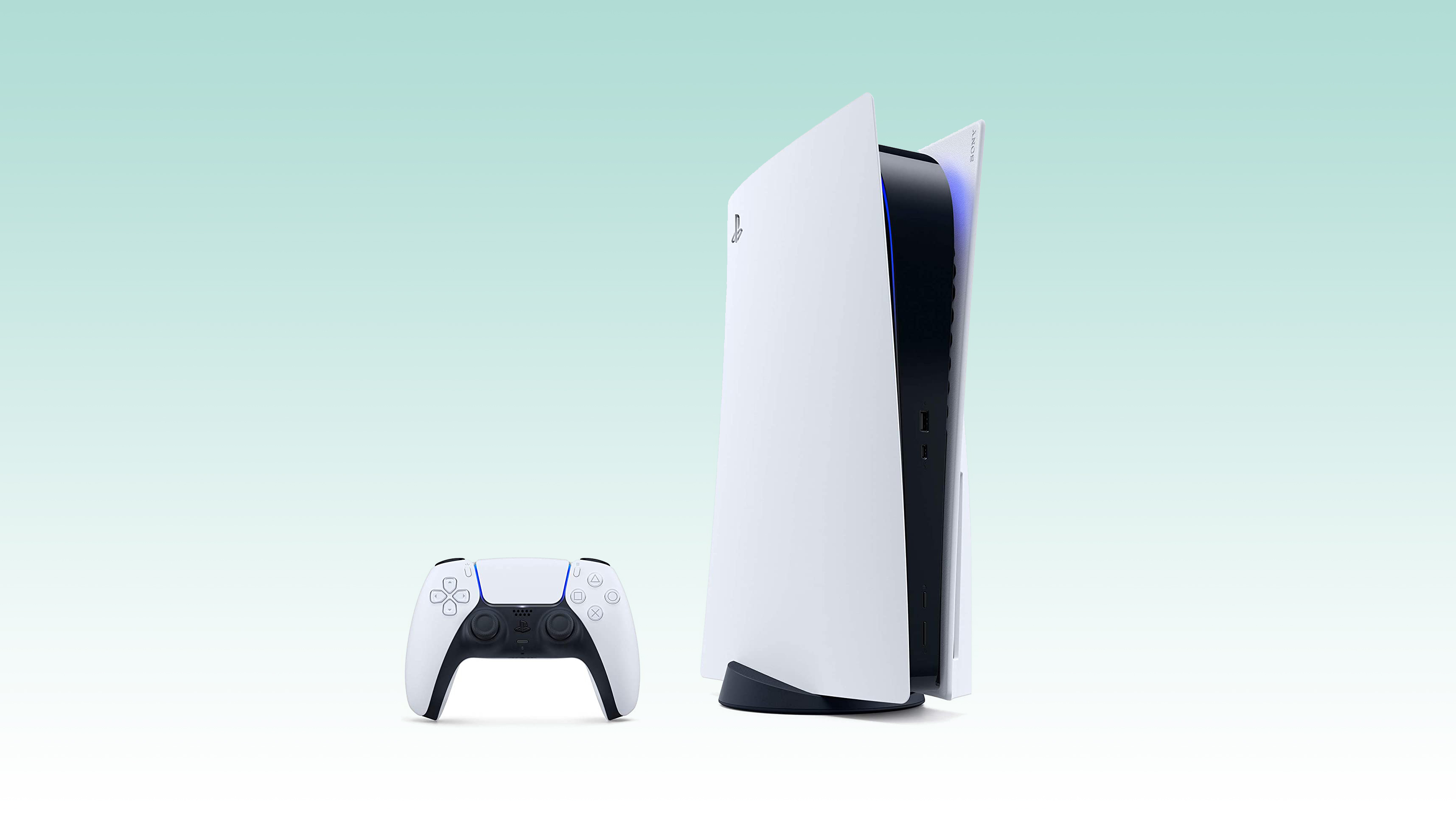120Hz 4K TV gaming explained: Why PS5 and Xbox Series X owners need a 120fps TV
120Hz 4K TVs are all the rage, and for good reason – they can make games more responsive, and look better than ever


Have you got a next-gen console like the PS5 or Xbox Series X? Are you making the most out of everything it has to offer? If your TV set isn't 4K with 120Hz refresh rate then the answer to that question is 'no'. But what is 120Hz gaming? How do you know if your TV can support it? And is it really worth upgrading your TV for?
Since the arrival of the PlayStation 5 and Xbox Series X a few years ago, 120Hz has been a key buzzword when it comes to choosing the best gaming TVs to go alongside it. Both consoles include compatibility for HDMI 2.1, which brings an extra suite of features to deliver smoother gaming at higher frame rates. But it’s important to note that you don’t necessarily need HDMI 2.1 for 120Hz gaming...
Both the PS5 and the Xbox Series X consoles have the capability to output at 120fps in compatible games but it’s the resolution that matters here. You might have an existing TV that’s capable of 120Hz but only at a 1080p resolution. HDMI 2.1 means that you’ll get the same frame rates at 4K, which will significantly improve the whole experience. Let’s get into the details on why this is a key feature of the best TVs for PS5 and how you can check what your TV is capable of.
What is gaming at 120Hz?
Previously, only PC gamers were happily crowing about 120Hz or 120 frames per second gaming, via DisplayPort connections. But while the previous generation of consoles maxed out at 60Hz over HDMI 2.0, both the PS5 and Xbox Series X consoles have the capability to output at 120Hz at both 1080p and 4K over HDMI 2.1, when games support it. Put simply, this means smoother, flowing visuals as the TV refreshes faster. But obviously this requires a TV that can receive that HDMI signal, and a panel that can keep up.
Put simply, a console outputting at 60Hz means that the image refreshes 60 times per second. A 120Hz output means 120 refreshes per second, so we see clearer and smoother motion with these speedier frame rates. This makes animations look more life-like and more detailed, because more information is being fed to our brains. All video (whether that's games or movies) is a series of still images, and our brains fill in the gaps between them. If you have more images per second, the brain doesn't have to fill as much in, and there's less motion blur – it means you can really see what's happening more, and you have less of that feeling that you're watching something artificial. It becomes more natural-looking.
This video uses slow-mo to showcase the differences, even if you're reading this on a monitor that can't show 120Hz video:
All of this also means we can react faster, because we’re seeing any changes on-screen twice as quickly – again, as explained in the video above. Games like shooters and racing games are significantly better with higher refresh rates, because we’re experiencing and responding to the action without extra fractions of a second of lag getting in the way.
Get all the latest news, reviews, deals and buying guides on gorgeous tech, home and active products from the T3 experts
Let’s face it, you’re never going to have a 14-year-old esports pro’s reaction times, but high refresh rates give you a fighting chance you might not have had before. Yes, we’re saying that a new TV can make you feel younger. Kind of. A bit.
It’s also worth pointing out here the big distinction between HDMI 2.0 and HDMI 2.1. Some televisions with HDMI 2.0 can display 120Hz content, but only at 1080p, so you’ll have to weigh up visual fidelity with frame rate.
If you are currently shopping for a new TV, just make sure you look at the HDMI ports in the description. While most manufacturers are eager to show off how gaming friendly they are, it’s best to check as HDMI 2.1 is only properly rolling out now in new screens – we've labelled them clearly in our guide to the best gaming TVs.
But we mentioned that games have to support 120fps. Outputting a game at twice the number of frames per second requires a lot more power from the machine, which means that if a game is already pushing a console's graphics capabilities at 60fps or even 30fps, there's no chance of it being able to increase to 120fps even if your TV can handle it.
So what you're likely to see is a lot of less intensive games that support 120fps just because they can, and some more intensive games who work hard to optimise for it, such as racers and some shooters. But it will by no means be universal.

How to check for 120Hz at 4K on PS5
Both new generation consoles make it easy to see what your TV can handle. On PS5 this means heading into the PS5’s settings and then ‘Screen and Video’ From here you can go into the top option of ‘Video Output’ and you’ll see what you are currently set to. If your resolution and 4K video transfer rate are both set to ‘Auto’ and you can see ‘3140 x 2160 - 120Hz’ at the top, congratulations, you’ve got a compatible HDMI 2.1 display. If you don’t have 120Hz at 4K, but still have a 4K TV, you’ll have 2160p resolution at 60Hz and be able to see all of the compatible frame rates in the ‘Screen and Video’ section.
Given that 120Hz at 4K gaming is so new and throws HDR into the mix too, there are still a few teething problems with certain compatible televisions. Samsung TVs are awaiting a software update to make sure they work with PS5 and on the PlayStation support page is the following statement:
“The PS5 console supports the HDMI 2.1 specification, and it also supports 4K 120Hz video output. On the other hand, 4K 120Hz TVs have not yet fully penetrated the market. Sony Interactive Entertainment is working with TV companies to find and solve problems during this transition period, but for the time being, players may experience some issues with 4K 120Hz.”
If you are struggling, Sony suggests making sure you are using a suitable HDMI 2.1 cable or the lead from the PS5 box and making sure that another box – such as an AV receiver – isn’t causing any interruptions. It’s also worth making sure you are plugged into the correct HDMI port as some TVs only have one or two HDMI ports that actually support HDMI 2.1 features.
The current list of games that support 120fps includes Destiny 2, Borderlands 3, Call of Duty Black Ops Cold War, and DIRT 5. PlayStation first party titles run at 60Hz but this will probably change as development becomes more PS5 focussed instead of games still having to be playable on the previous generation as well.
Tip: another way to boost your experience on Sony's next-gen console is by buying one of the best PS5 SSDs - you'll get more storage and better speeds.
Read 5 mistakes everyone makes with PS5 to find out more handy tips and tricks.

How to check for 120Hz at 4K on Xbox Series X
Just like the PS5, the Xbox Series X will let you quickly check what your TV is capable of and it makes it even clearer. Head into the settings menu, choose ‘TV and Display Options’ and then ‘4K TV Details.’ The Xbox then clearly displays exactly what your TV is capable of. A green tick means that your TV is playing nice with resolutions etc, while a red circle with a line through it will tell you what your screen can’t handle. Again, always make sure you are plugged into HDMI 2.1 capable ports to make sure the Xbox is giving you the right information.
When it comes to compatible 120Hz at 4K games on Xbox Series X, there’s a significantly longer list. While there are the same ones as PS5, there are also first party titles such as Gears 5, Halo: The Master Chief Collection, Sea of Thieves, and Ori and the Will of the Wisps (which is the game shown in the video above).
Louise Blain is a journalist and broadcaster specialising in technology, gaming, and entertainment. She has a weekly consumer tech slot on BBC Radio Scotland and is the presenter of BBC Radio 3's monthly Sound of Gaming show. She can also regularly be found on BBC Radio 4, BBC Five Live, and The Evolution of Horror podcast as well as writing for GamesRadar and NME. Louise loves finding ways that tech can make our lives better every day and no, she doesn't have enough smart lighting yet.
